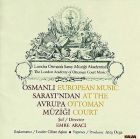Buy or gift a stand-alone digital subscription and get unlimited access to dozens of back issues for just £18.99 / $18.99 a year.
Please register at www.exacteditions.com/digital/cornucopia with your subscriber account number or contact subscriptions@cornucopia.net
Buy a digital subscription Go to the Digital EditionThe Camondo family, once dubbed ‘the Rothschilds of the East’, amassed a fortune in Turkey before moving to Paris in 1869. There, in the rue de Monceau, they established an exquisite collection of 18th-century French art, which was bequeathed to the nation in 1935. Today the Musée Nissim de Camondo is all that survives of this magnificent but short-lived dynasty.
Every art-lover who has frequented the great galleries of Paris is familiar with the best of their Impressionist masterpieces. The more discriminating are almost as familiar with the exquisite collection of eighteenth-century work that embellishes the Nissim de Camondo Museum beside the Parc Monceau in the 8th arrondisement. Very few of them know that the fortune which endowed these great French national treasures originated in Istanbul.
In 1911 Isaac de Camondo left his vast collection of works of art, which included most particularly Japanese prints and Impressionist paintings – over 400 Utamaros and a glittering neckace of such jewels as Manet’s Le Fifre and Monet’s Les Cathédrales de Rouen – to the Louvre. Hung there for fifty years, as he had stipulated, they now adorn other great Paris galleries besides. In 1935, Isaac’s cousin, Moïse de Camondo, bequeathed his house at 63 rue de Monceau to the Union Centrale des Arts Décoratifs. It was to be a memorial to his only son, killed flying a combat mission over the Western Front at the age of 25, in 1917.
The contents of the Musée de Camondo were the fruit of a lifetime spent in the pursuit of perfection, collecting all that was finest of 18th-century French artefacts that came on a flourishing art market. The house remains today as it was when Moïse died. Only the telltale fez which crowns a couple of portrait heads and a set of silver dishes bearing the tuğra sign of Sultan Abdülamecid betray a Turkish connection; they must have come with the Camondos when they moved to Paris from Istanbul in 1869…
Anyone visiting Paris to taste the new Islamic galleries at the Louvre, should step up to the Nissim de Camondo Museum.
In Turkey ‘muhallebi’ forms part of everyone’s diet, from babies to grandmothers, for it is wonderfully nourishing. It has two essential ingredients: pure starch - whether from the flour of rice, wheat, corn or potatoes - which is entirely digestible: and milk, which is rich in protein, calcium and vitamins.
More cookery features
Harald Hauptmann, who led the archaeological team which unearthed this find, near the city of Urfa, explains why the early Neolithic sites of southeastern Turkey are rewriting history.
Mount Ida (Kaz Dağı) is a paradise for wild flowers. Martyn Rix prospected the area from cool, damp north to hot, dry south. There he found and photographed dwarf flax, giant hogweed – and plants that grow nowhere else in the world
Emin Barın created an entire new language for calligraphy. Elizabeth Meath Baker reports

The London Academy of Ottoman Court Music, with Emre Aracı. Produced by Ates Orga,

Cornucopia works in partnership with the digital publishing platform Exact Editions to offer individual and institutional subscribers unlimited access to a searchable archive of fascinating back issues and every newly published issue. The digital edition of Cornucopia is available cross-platform on web, iOS and Android and offers a comprehensive search function, allowing the title’s cultural content to be delved into at the touch of a button.
Digital Subscription: £18.99 / $18.99 (1 year)
Subscribe now